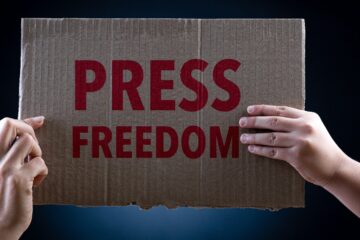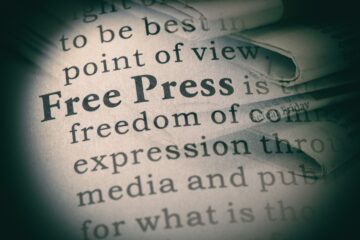If a picture is worth a thousand words, the July/August issue of Quill magazine, the Society of Professional Journalists’ magazine, is a soliloquy that reduces women to their backsides.
This weekend, New Mexico journalist and SPJ member Marie C. Baca rightly pointed out that the image of a woman’s posterior used to illustrate this month’s “Training Day” feature about journalism training was a poor choice. As Baca put it in a letter to SPJ’s board: “We don’t get to see this woman’s face, she is simply an object, and the focal point of the cover photo is her butt.”
SPJ’s official response, in part (you can read it all here) was that the photo showed a woman in typical workout wear, and that “we are sorry some readers find it offensive.”
The non-apology “We’re sorry if you were offended” apology is neither helpful nor authentic, and in SPJ’s case, it’s damaging to our efforts to be an open and welcoming place for all journalists.
If you’re asking why we’re devoting this space to a stock image on an association magazine cover, here’s why: The message it sends matters.
Women and men enter journalism in equal numbers, but do not remain in the field or advance to management equally.
The lack of diversity in journalism has been cited as one of the major threats our profession is facing.
Baca’s letter makes us think of a young woman journalist who might see image and have concerns but not be sure if she would be heard. Later, she may be a little less likely to stick her neck out and ask for a raise, as Baca noted, or advocate for a tough assignment.
And if journalism is covering itself this way, how are we covering our communities? We must do better than this.
Our profession and SPJ must consider the impact of the images and words we use in coverage. Heck, the responsibility to do that is enshrined in our ethics code: “Avoid stereotyping. Journalists should examine the ways their values and experiences may shape their reporting.”
It’s an editor’s job to consider whether people who are different from her would see bias in the words and images she’s chosen – and then consult people who are different from her, to see if she’s right.
The SPJ Rio Grande board shares Baca’s concerns about the image and about SPJ’s unwillingness to admit that it made a poor choice.
We’re committed to being an open and welcoming place for all journalists, and to holding our own organization accountable when we see it fall short, as we’ve done here, by writing these words and sending them to SPJ’s board president.



